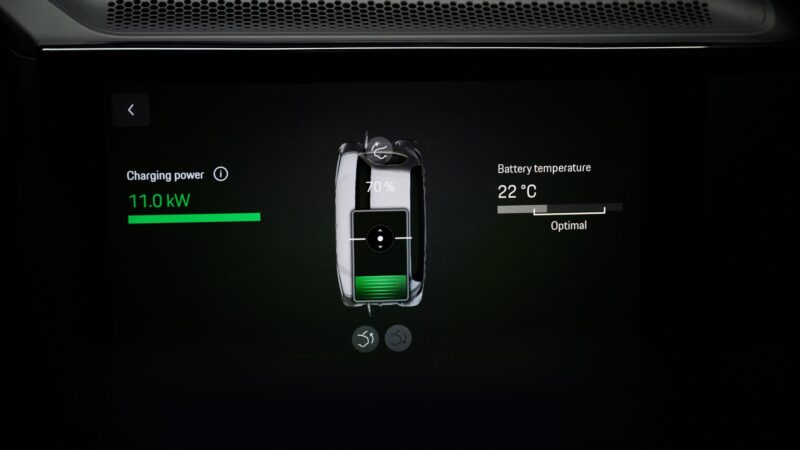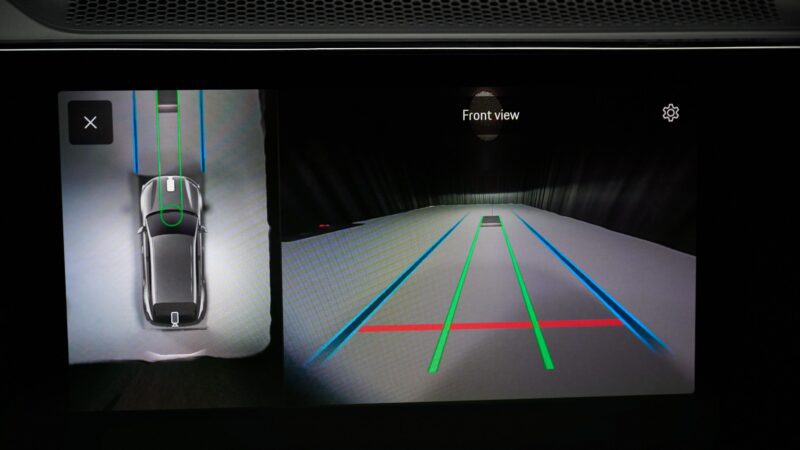Charging infrastructure remains one of the biggest hurdles in mass EV adoption worldwide. Tesla’s decision to open its Supercharger network to other automakers and the standardization of NACS is a step in the right direction, but compatibility issues persist. Different models place charging ports in different locations, some chargers are unreliable, and downtime at public stations is still common. Inductive wireless charging, similar to what we already use with our smartphones, could be a promising solution. While it won’t solve every issue overnight, it points to a future where things could be as simple as pulling up onto a charger and walking away, making the charging experience far more seamless.
Here’s how the tech works. The floor plate contains a copper transmitter coil powered by alternating current, creating a magnetic field. The vehicle’s underbody receiver coil picks up that field, generating alternating current on the vehicle side. A rectifier then converts it into direct current for the high-voltage battery. Porsche will be one of the latest automakers to adopt this tech on its upcoming Cayenne Electric, which recently set a record at the Shelsley Walsh Hill Climb in England and showcased the prototype at the Goodwood Festival of Speed, highlighting that performance remains central to the brand’s identity.



Besides plugging into a wallbox, if you tick the right boxes during configuring the Cayenne electric, you will be able to park over a floor plate that transfers up to 11 kW, enough to handle overnight charging. The plate itself measures 117 by 78 centimeters (46 by 31 inches), weighs 50 kilograms (110 pounds).
Porsche also integrates ultra-wideband positioning to help align the car, with visual cues in the infotainment system and a dedicated Surround View camera mode to make positioning easy. The Cayenne electric will then lower itself about 10 centimeters (4.0 inches) to optimize the connection, while a receiver unit under the SUV converts the energy into usable current for the battery. Efficiency sits at around 90 percent, not far off from wired AC charging.
Assuming a 100 kWh battery pack, charging from 20 to 80 percent at 11 kW should take about 5.5 to 6 hours, ideal for overnight top-ups. For road trips, the Cayenne supports up to 400 kW DC fast charging, which can add hundreds of miles of range in less than 20 minutes, surpassing the Taycan’s 320 kW peak, making it one of the fastest-charging EVs to hit the market.
Porsche has built in multiple fail-safes. If a pet, person, or stray object moves under the car, the system cuts off immediately. Even small metal objects, like coins, can stop charging to prevent overheating. TÜV Süd testing confirmed the system’s robustness, and the pad carries CE and UL certifications. It’s weatherproof, designed to operate in rain and snow, and can even survive being driven over. Electromagnetic radiation is restricted to the car’s underbody during charging.


In terms of how much all this hardware will cost, the inductive pad itself will set you back about €5,000 ($5,400), while the Cayenne requires a €2,000 ($2,160) receiver option or a €200 ($215) pre-install kit. With installation, expect the full setup to exceed €7,500 ($8,100). A conventional wallbox delivers the same AC power for far less, making this a luxury convenience feature for now.
Now, inductive charging for cars has been in the works for more than a decade. Volkswagen experimented with the idea during the e-Golf era, and pilot projects have cropped up across Europe and Asia. In China, where EV adoption is more mature, companies like FAW and Dongfeng have tested inductive systems, while Nio went a step further and gained traction with battery-swapping stations. More recently, Tesla revealed plans to equip its upcoming Cybercab robotaxi fleet with inductive charging, signaling wider industry momentum.
Coming back to Porsche, the German automaker will present the system at the upcoming IAA Mobility 2025 show in Munich, with a prototype with electroluminescent paint that glows in five colors when energized. It’s a showpiece, not production-ready, but it fits Porsche’s tradition of using IAA to debut groundbreaking tech. The 901, 911 Targa, the 911 RSR Turbo concept, the 930 Turbo Cabriolet 4×4, 959, the water-cooled 996, the 918 Spyder, and Mission E-Concept all made their first public appearances at the German show. Besides the Cayenne electric, we also expect the 992.2 Turbo to break cover.
The Cayenne Electric will hit the market in late 2025, with wireless charging rolling out in Europe first in 2026, and other markets will follow. The system works, but would you pay Porsche money to skip plugging in, or wait until inductive charging reaches mass-market prices? The tech may be expensive now, yes, but with economies of scale, the cost could fall, and charging hassles could eventually become a thing of the past.

Images Source: Porsche
